This is our free ASVAB Mechanical Comprehension practice test. On the Mechanical Comprehension ASVAB test you will be given 20 minutes in which to complete 16 questions. You will need to be familiar with mechanics and applied physics. Topics will include basic mechanics, simple machines and fluid power. If you spend some time reviewing this material it will make a big difference in your final score. Start your review now with our ASVAB Mechanical Comprehension practice questions.
Question 1 |
Which of the following is the basis for Pascal’s Law?
The amplification of force in a hydraulic system. | |
The relationship between force and volume of a liquid. | |
The definition of pressure as pounds per square inch. | |
The manner in which liquids conform to their container. |
Question 2 |
The smaller gear has 8 teeth, and the larger gear has 16 teeth. When the larger gear makes 12 revolutions, how many revolutions will the smaller gear make?
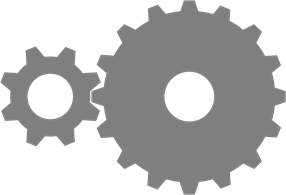
8 | |
16 | |
18 | |
24 |
Question 3 |
How much force is needed to lift the 10Kg weight?
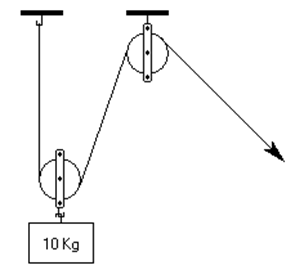
2 Kg | |
5 Kg | |
10 Kg | |
20 Kg |
Question 4 |
An 80-lb child is sitting on one end of a seesaw. If another 80-lb child jumps from a high platform onto the other end of the seesaw, what will happen?
The first child will stay stationary on the ground. | |
The second child will bounce off the seesaw into the air. | |
The first child will bounce off the seesaw into the air. | |
The first child will be lifted into the air, but remain seated. |
Question 5 |
What is a vector quantity?
Gravity | |
Magnitude | |
Volume | |
Mass |
Question 6 |
Which of the following describes the relationship between kinetic energy, mass, and velocity?
KE = ½ m2v | |
(1/3)(KE) = m/v2 | |
2(KE) = mv2 | |
3(KE) = m2v |
Question 7 |
One horsepower is equivalent to
724 watts | |
746 watts | |
768 watts | |
782 watts |
Question 8 |
What type of simple machine is pictured below?
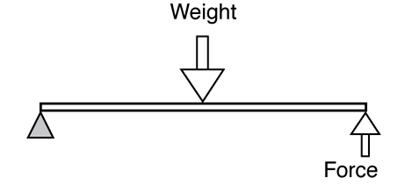
Fulcrum | |
First-class lever | |
Second-class lever | |
Third-class lever |
Question 9 |
At minimum, how many pulleys are there in a block and tackle system?
One | |
Two | |
Three | |
Four |
Question 10 |
When torque increases, speed
remains the same | |
increases, then decreases | |
increases | |
decreases |
Question 11 |
If a wedge is made longer relative to its height, how does the force increase?
The amount of lift is decreased as the wedge is moved horizontally. | |
The amount of lift is increased as the wedge is moved horizontally. | |
The amount of lift is decreased as the wedge is moved vertically. | |
The amount of lift is increased as the wedge is moved vertically. |
Question 12 |
If a man uses 200 N of force over a distance of 50 meters, how many joules of work are performed?
1,000 | |
5,000 | |
10,000 | |
20,000 |
Question 13 |
What is a component of potential energy?
Upward reactive force | |
The energy of movement | |
Gravity’s relationship to mass | |
Newtons and distance |
Question 14 |
A fish tank at an aquarium contains several cubic feet of water (1 cubic foot of water = 62.5 pounds). If the fish tank is 6 feet deep, 12 feet wide, and 13 feet long, what’s the approximate pressure at the bottom of the tank in pounds per square inch?
2.0 | |
2.5 | |
3.0 | |
3.5 |
The bottom of the tank’s surface area is 12 ft × 13 ft = 144 inches × 156 inches. Since pressure is in pounds per square inch (psi), we have to convert to inches. The surface area is 22,464 inches.
The psi is 58,500 ÷ 22,464 which is approximately 2.6. The closest answer is (B).
Question 15 |
If Gear A turns counterclockwise, what other gears turn counterclockwise?
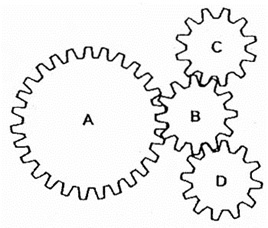
C and D | |
B and D | |
C and B | |
B, C, and D |
Question 16 |
The well pictured below uses what type of simple machine to raise and lower a bucket?
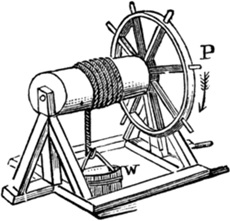
Block and tackle | |
Third-class lever | |
Wedge | |
Wheel and axle |
|
List |
